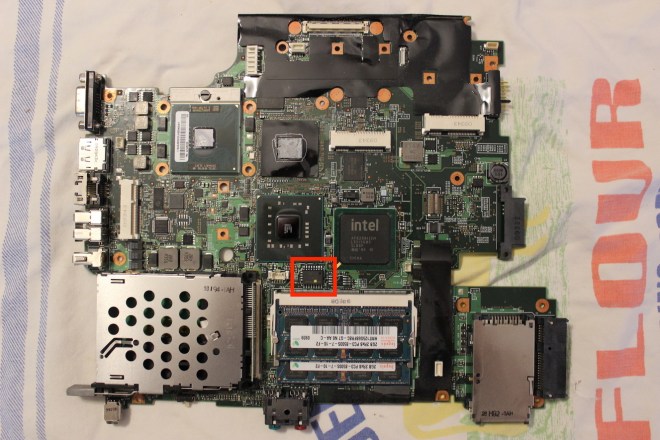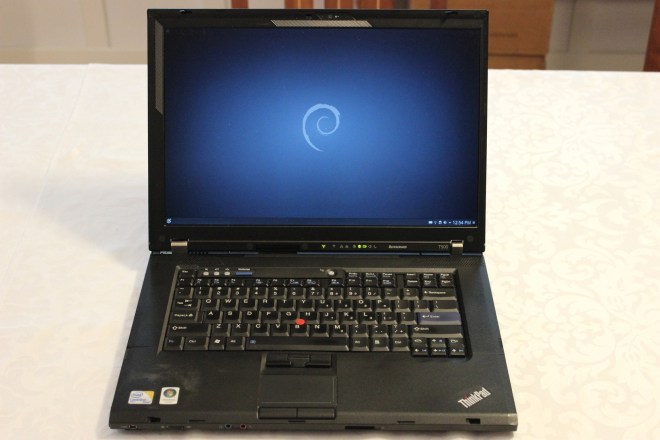The 4.10 release covers commit a2faaa9a2 to commit ae317695e3 There is a pgp signed 4.10 tag in the git repository, and a branch will be created as needed.
In nearly 8 months since 4.9 we had 198 authors commit 2538 changes to master. Of these, 85 authors made their first commit to coreboot: Welcome!
Between the releases the tree grew by about 11000 lines of code plus 5000 lines of comments.
Again, a big Thank You to all contributors who helped shape the coreboot project, community and code with their effort, no matter if through development, review, testing, documentation or by helping people asking questions on our venues like IRC or our mailing list.
What’s New
Most of the changes were to mainboards, and on the chipset side, lots of activity concentrated on x86. However compared to previous releases activity (and therefore interest, probably) increased in vboot and in non-x86 architectures. However it’s harder this time to give this release a single topic like the last: This release accumulates some of everything.
Clean Up
As usual, there was a lot of cleaning up going on, and there notably, a good chunk of this year’s Google Summer of Code project to clean out the issues reported by Coverity Scan is already in.
The only larger scale change that was registered in the pre-release notes was also about cleaning up the tree:
device_t is no more
coreboot used to have a data type, device_t that changed shape depending on
whether it is compiled for romstage (with limited memory) or ramstage (with
unlimited memory as far as coreboot is concerned). It’s an old relic from the
time when romstage wasn’t operated in Cache-As-RAM mode, but compiled with
our romcc compiler.
That data type is now gone.
Release Notes maintenance
Speaking of pre-release notes: After 4.10 we’ll start a document for 4.11 in the git repository. Feel free to add notable achievements there so we remember to give them a shout out in the next release’s notes.
Known Issues
Sadly, Google Cyan is broken in this release. It doesn’t work with the "C environment" bootblock (as compared to the old romcc type bootblock) which is now the default. Sadly it doesn’t help to simply revert that change because doing so breaks other boards.
If you want to use Google Cyan with the release (or if you’re tracking the master branch), please keep an eye on https://review.coreboot.org/c/coreboot/+/34304 where a solution for this issue is sought.
Deprecations
As announced in the 4.9 release notes, there are no deprecations after 4.10. While 4.10 is also released late and we target a 4.11 release in October we nonetheless want to announce deprecations this time: These are under discussion since January, people are working on mitigations for about as long and so it should be possible to resolve the outstanding issues by the end of October.
Specifically, we want to require code to work with the following Kconfig options so we can remove the options and the code they disable:
- C_ENVIRONMENT_BOOTBLOCK
- NO_CAR_GLOBAL_MIGRATION
- RELOCATABLE_RAMSTAGE
These only affect x86. If your platform only works without them, please look into fixing that.
Added 28 mainboards:
- ASROCK H110M-DVS
- ASUS H61M-CS
- ASUS P5G41T-M-LX
- ASUS P5QPL-AM
- ASUS P8Z77-M-PRO
- FACEBOOK FBG1701
- FOXCONN G41M
- GIGABYTE GA-H61MA-D3V
- GOOGLE BLOOG
- GOOGLE FLAPJACK
- GOOGLE GARG
- GOOGLE HATCH-WHL
- GOOGLE HELIOS
- GOOGLE KINDRED
- GOOGLE KODAMA
- GOOGLE KOHAKU
- GOOGLE KRANE
- GOOGLE MISTRAL
- HP COMPAQ-8200-ELITE-SFF-PC
- INTEL COMETLAKE-RVP
- INTEL KBLRVP11
- LENOVO R500
- LENOVO X1
- MSI MS7707
- PORTWELL M107
- PURISM LIBREM13-V4
- PURISM LIBREM15-V4
- SUPERMICRO X10SLM-PLUS-F
- UP SQUARED
Removed 7 mainboards:
- GOOGLE BIP
- GOOGLE DELAN
- GOOGLE ROWAN
- PCENGINES ALIX1C
- PCENGINES ALIX2C
- PCENGINES ALIX2D
- PCENGINES ALIX6
Removed 3 processors:
- src/cpu/amd/geode_lx
- src/cpu/intel/model_69x
- src/cpu/intel/model_6dx
Added 2 socs:
- src/soc/amd/picasso
- src/soc/qualcomm/qcs405
Toolchain
- Update to gcc 8.3.0, binutils 2.32, IASL 20190509, clang 8











